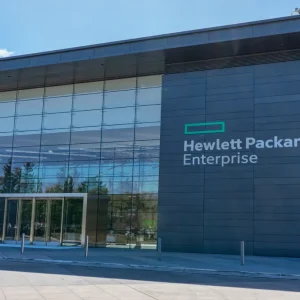
Digital transformation – like it or not the buzzword has become a major trend that is dominating the tech industry. Businesses are shifting in order to be able to better compete with their rivals and serve their customers and even tech companies are restructuring in order to survive.
The likes of IBM, Dell, EMC, and HPE have all gone through major restructuring projects in order to better serve customers.
Progress, a global apps and data development and integration company that covers industry such as manufacturing, telecommunications, financial services, and government has been going through its own changes.
The company decided to bring together its disparate products under one banner in order to provide full digital transformation from back-end to end user.
CBR spoke to Mark Armstrong, VP and MD EMEA at Progress about why the company is evolving, the challenges it faces, and how businesses are dealing with digital transformation projects.
JN: Why are you evolving the Progress brand?
Armstrong: “This is essentially an expansion of our current strategy. Progress has always been focused on enabling our customers and partners to build for the future, without losing sight of the here and now. This is just the next step in helping businesses build out their digital capabilities.”
JN: What areas will you be focusing on/why?
Armstrong: “We are announcing a series of solutions to support customers, with DigitalFactory for Sites, DigitalFactory for Mobile and Digital Factory for Engagement. These all offer cloud-based options for enterprise customers that strengthen their customer engagement efforts across multiple channels.”
JN: Given the large number of consulting firms that offer to help solve businesses digital transformation problems, what are you doing that’s different?
Armstrong: “We have to accept ‘digital transformation’ is a buzzword and as a result many companies are trying to jump on the bandwagon without actually doing much to help their customers achieve these goals.
“We offer real-life, applicable tools and solutions that have a tangible impact. Companies such as Salesforce, Amazon and Adobe often lock customers into specific vendors, or have parts of solutions that don’t integrate, leaving the buyer to put it together. Our approach is to offer a fully integrated modular platform, based on open standards, with open APIs, minimising the risk of vendor lock in and providing the ability to integrate with existing, legacy technologies.”
JN: What are the typical problems that businesses are facing? Why?
Armstrong: “We recently carried out a piece of global research asking everyone from the CEO to the marketers this very question, and the results showed there were quite a few. One of the big problems was while 75% of respondents had a defined strategy in place for carrying out digital transformation, 70% felt reliance on IT and a lack of digital leadership as being barriers to success. To me, the statistics point to a lack or breakdown of communication between different departments, with a sense of kicking the can along when it comes to taking responsibilities.
“Another very specific challenge is guaranteeing consistency of content on web and mobile, across geographies. More businesses are operating globally and need to be able to provide content consistent in theme but tailored to the individual needs of the market it’s being viewed in.”
JN: Are businesses looking at digital transformation as a one off event they have to do, or do they see it as an ongoing process that will effectively never end?
Armstrong: “It’s a bit of both. Our survey showed that 99% of businesses in the UK considered digital transformation a priority for the next 12 months, so there is certainly a feeling that they need to get started as soon as possible.
“However, this isn’t a fixed job; you can’t flick a switch and be transformed tomorrow and set for life. For most businesses it’s a matter of building the foundations for what is going to be a constant and iterative process from there on out. Put it this way, with the pace of change we are seeing in technology I won’t be retiring anytime soon.”
JN: How forward looking are businesses being? Do they just want to catch up to what has become the norm today, or are they looking further forward at future trends?
Armstrong: “At the risk of repeating myself, it really is a bit of both. The biggest priority at the moment is improving customer experience. The way a number of start-ups are building offerings that are built around the customer experience – think Uber, Transferwise or Airbnb – established players might feel they need to catch up and quickly.
“It’s no use waiting a few years to win back customers; you need to get their attention now. However, if you are always playing catch-up then this means you’re always going to be behind – look at Yahoo! for instance. Having one eye on the future is absolutely essential, and we are seeing businesses dedicate more time to think about this alongside daily operations.”
JN: How risk averse are businesses?
Armstrong: “From the survey we found that UK CEOs are the most risk averse and understandably this has a significant knock-on effect. When the ultimate decision-maker isn’t convinced it’s very difficult to get things moving no matter how much good will there is across the rest of the organisation.
“That said, our research showed that 61% of businesses thought it might already be too late to implement digital transformation, so I’d expect CEOs to start accepting there is necessary risk and be a little bolder.”
JN: Who in the organisation is leading the transformation?
Armstrong: “Once it’s been accepted that a digital transformation project is needed we have seen a mix of CEOs, CIOs and CDOs (Chief Digital Officers) leading those programmes.
“Ultimately though it is something that is being driven by external needs, forcing every department to work closer together to solve the challenges. Our study showed that many businesses felt they needed a better alignment between marketing and IT, so this need for collaboration is being felt very keenly internally.”






